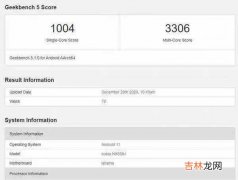with tf.variable_scope("attention"):
attention_heads = [] 定义注意力头的集合
with tf.variable_scope("self"):
attention_head = attention_layer( 每个注意力头就是一个注意力层
from_tensor=layer_input, 源矩阵和目标矩阵相同,也就是自己注意自己
to_tensor=layer_input,
attention_mask=attention_mask, 注意力掩码
num_attention_heads=num_attention_heads, 头数
size_per_head=attention_head_size, 每头的大小
attention_probs_dropout_prob=attention_probs_dropout_prob, 注意力数据丢弃比例
initializer_range=initializer_range, 数据初始化范围,也就是标准差
do_return_2d_tensor=True, 是否要求返回2D张量
batch_size=batch_size, 批处理量
from_seq_length=seq_length, 源序列长度
to_seq_length=seq_length) 目标序列长度
attention_heads.append(attention_head) 将生成的头【矩阵】添加到集合中
attention_output = None
if len(attention_heads) == 1: 如果只有一头,则输出就是这一头
attention_output = attention_heads[0]
else: 如果有好多头
有多头的情况下,我们将他们连接起来,然后再投影;
# In the case where we have other sequences, we just concatenate
# them to the self-attention head before the projection.
attention_output = tf.concat(attention_heads, axis=-1)
tf.concat(),tensorflow中用来拼接张量的函数tf.concat(),用法:
axis=0 代表在第0个维度拼接; axis=1 代表在第1个维度拼接
axis=-1表示倒数第一个维度,对于三维矩阵拼接来说,axis=-1等价于axis=2 。
对于一个二维矩阵,第0个维度代表最外层方括号所框下的子集,第1个维度代表内部方括号所框下的子集 。维度越高,括号越小 。
# Run a linear projection of `hidden_size` then add a residual
# with `layer_input`.
对隐藏层尺寸进行线性投影,然后再加上一个残差
with tf.variable_scope("output"):
attention_output = tf.layers.dense( 创建一个全连接层/密集层
attention_output,
hidden_size,
kernel_initializer=create_initializer(initializer_range))
attention_output = dropout(attention_output, hidden_dropout_prob) 丢弃
attention_output = layer_norm(attention_output + layer_input) 标准化
激活函数仅用于中间层
# The activation is only applied to the "intermediate" hidden layer.
with tf.variable_scope("intermediate"):
intermediate_output = tf.layers.dense( 创建一个全连接层/密集层
attention_output, 将上一层的输出,作为本层的输入
intermediate_size, 中间层大小
activation=intermediate_act_fn,
kernel_initializer=create_initializer(initializer_range))
向下投射到隐藏层大小,然后再和残差相加
# Down-project back to `hidden_size` then add the residual.
with tf.variable_scope("output"):
layer_output = tf.layers.dense( 创建密集层,进行矩阵投影运算
intermediate_output,
hidden_size,
kernel_initializer=create_initializer(initializer_range))
layer_output = dropout(layer_output, hidden_dropout_prob) 丢弃
layer_output = layer_norm(layer_output + attention_output) 标准化
prev_output = layer_output
all_layer_outputs.append(layer_output) 再添加一个层
if do_return_all_layers: 如果要求返回所有的层
final_outputs = [] 最终返回值
for layer_output in all_layer_outputs: 遍历所有层
final_output = reshape_from_matrix(layer_output, input_shape) 每个层都进行变形
final_outputs.append(final_output) 添加到返回值中
经验总结扩展阅读
- 【lwip】11-UDP协议&源码分析
- 硬核剖析Java锁底层AQS源码,深入理解底层架构设计
- SpringCloudAlibaba 微服务组件 Nacos 之配置中心源码深度解析
- Seata 1.5.2 源码学习
- MindStudio模型训练场景精度比对全流程和结果分析
- .NET 源码学习 [数据结构-线性表1.2] 链表与 LinkedList<T>
- Redisson源码解读-公平锁
- OpenHarmony移植案例: build lite源码分析之hb命令__entry__.py
- 【深入浅出 Yarn 架构与实现】1-2 搭建 Hadoop 源码阅读环境
- JVM学习笔记——内存模型篇














